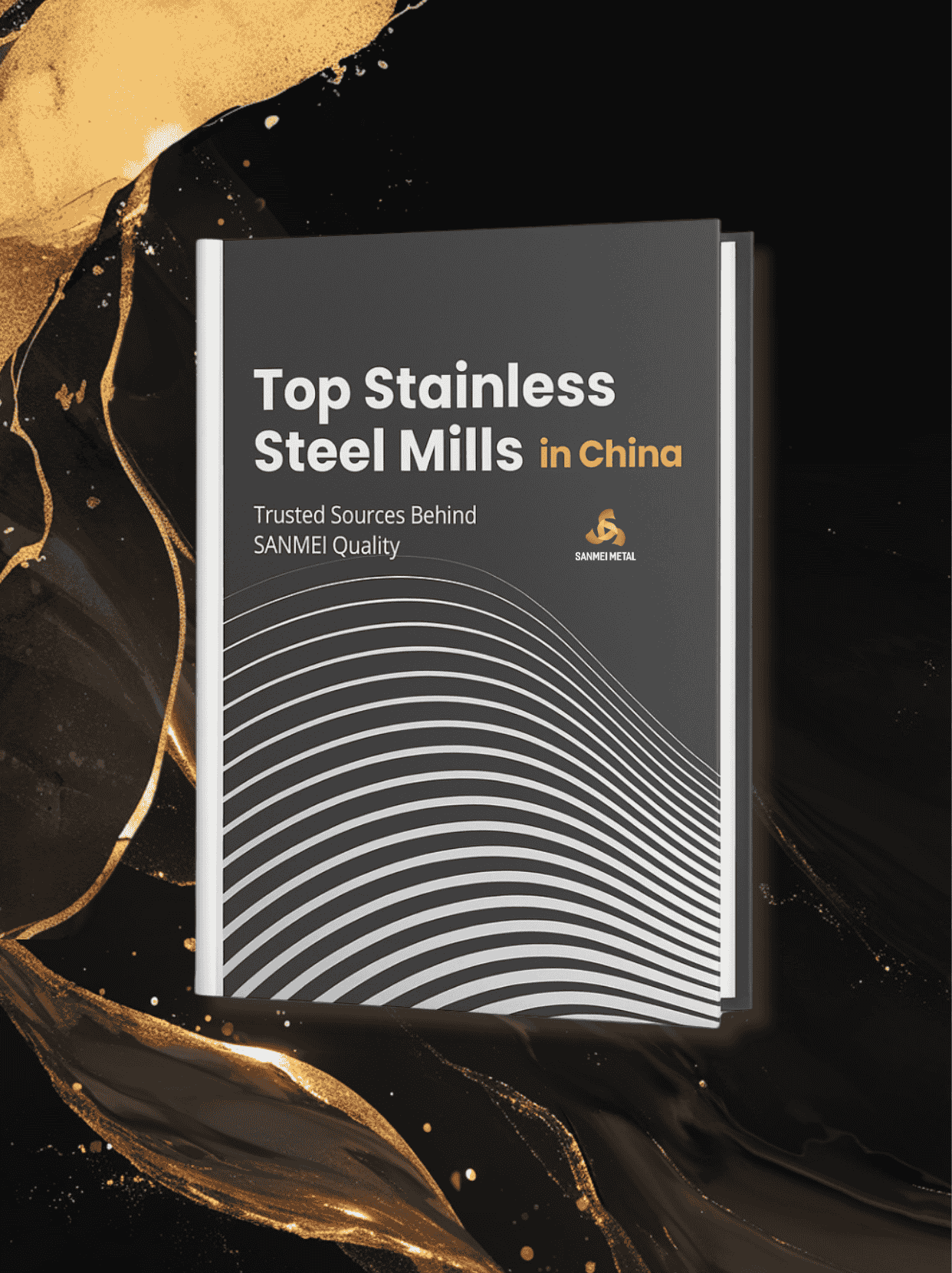
Получите свой БЕСПЛАТНО Доступ: Досье китайского сталелитейного завода #1
Ориентировано на покупателя: подбирайте мельницы по классу/отделке/ширине-толщине/применению
БАОВУЦиншаньЛискоТиско
Посмотреть подробности и примеры →


Обзор
Нержавеющая сталь 420, известная как S42000, представляет собой мартенситный закаливаемый сплав, который отличается повышенной прочностью и твёрдостью по сравнению с другими нержавеющими сталями, такими как 410 и 416. Он содержит не менее хрома 12% для коррозионной стойкости и более высокое содержание углерода, что увеличивает его износостойкость и позволяет ему достигать твёрдости по Роквеллу до 50 HRC после термической обработки. Эта сталь демонстрирует хорошую пластичность в отожжённом состоянии, но её обрабатываемость снижается после закалки свыше 30 HRC. Несмотря на хорошую коррозионную стойкость, особенно после закалки и полировки, она не так стойка, как обычные аустенитные марки, и ограничена потерей пластичности при отрицательных температурах и потерей прочности при повышенных температурах из-за переотпуска. Обычные области применения включают втулки, стоматологические и хирургические инструменты, детали насосов, компоненты клапанов и валы. Не рекомендуется использовать при температурах выше отпуска из-за снижения механических свойств; сварка возможна при соблюдении правильных методов.
Общие свойства
Нержавеющая сталь 420 — это высокоуглеродистая мартенситная марка, обеспечивающая баланс твёрдости и коррозионной стойкости. Она известна своей высокой твёрдостью, износостойкостью и умеренной коррозионной стойкостью. В состав стали входят углерод (C: 0,15–0,40%), хром (Cr: 12,0–14,0%) и другие элементы в меньших количествах, такие как марганец (Mn), кремний (Si), фосфор (P) и сера (S).
Приложения
Нержавеющая сталь марки 420 используется в различных областях, где прочность и долговечность имеют решающее значение, например, в производстве столовых приборов, хирургических инструментов и приспособлений. Она также применяется в прецизионном оборудовании, подшипниках, электрооборудовании, приборах, транспортных средствах, бытовой технике и кухонной утвари.
Коррозионная стойкость:
Хотя нержавеющая сталь 420 обеспечивает хорошую коррозионную стойкость, особенно после закалки и полировки, она уступает обычным аустенитным маркам. Её коррозионная стойкость снижается при отрицательных температурах и при повышенных температурах из-за переотпуска.
Теплостойкость:
Диапазон полезного использования нержавеющей стали 420 ограничен потерей ее пластичности при отрицательных температурах и потерей прочности при повышенных температурах из-за переотпуска.
Обрабатываемость:
Нержавеющая сталь 420 относительно легко поддается обработке в отожженном состоянии, но после закалки до твердости выше 30 HRC обработка становится более сложной.
Сварка:
Сварка не является обычным делом для этого сплава из-за его свойств упрочнения, но с помощью правильных методов и послесварочной термической обработки можно предотвратить образование трещин.
Горячая обработка:
Горячая обработка нержавеющей стали 420 может повысить ее прочность и износостойкость.
Холодная обработка:
Холодная обработка может повысить твердость и прочность стали, а также улучшить качество ее поверхности и точность размеров.
Отжиг:
Отжиг применяется для размягчения стали, улучшения ее обрабатываемости и подготовки к дальнейшим процессам термической обработки.
Темперирование:
Отпуск применяют для уменьшения хрупкости и внутренних напряжений после закалки.
Закалка:
Нержавеющую сталь 420 можно закалить для достижения высокого уровня твердости посредством процесса нагрева и быстрого охлаждения (закалки).
| Свойство | Ценить |
|---|---|
| Плотность | 7,74 г/см³ |
| Модуль упругости | 200 ГПа (29 x 10^6 фунтов на кв. дюйм) |
| Коэффициент теплового расширения | 10,3 мкм/м·°C (5,7 мкдюйм/дюйм·°F) |
| Теплопроводность | 24,9 Вт/м·К (14,4 БТЕ/фут·ч·°F) |
| Удельная теплоемкость | 460 Дж/кг·К (0,11 БТЕ/фунт·°F) при 0–100 °C (от 32 до 212 °F) |
| Электрическое сопротивление | 0,55 мкОм·м при 20°C |
Свойство | Предел текучести, мин. (тыс.фунтов на кв.дюйм) | Прочность на растяжение, мин. (тыс.фунтов на кв.дюйм) | Удлинение, мин. (%) | Твердость, макс. (Rb) |
420 | 345 (50) | 655 (95) | 25 | 321 ОБД |
| Оценка | Углерод (С) | Марганец (Mn) | Кремний (Si) | Фосфор (P) | Сера (S) | Хром (Cr) | Никель (Ni) | Молибден (Mo) | Железо (Fe) |
| 420 | 0.15 - 0.40% | ≤1.00% | ≤1.00% | ≤0,040% | ≤0,030% | 12.0 - 14.0% | ≤0,75% | ≤0,50% | Баланс |

Нержавеющая сталь 420 исключительно хорошо работает во влажных и агрессивных средах, устойчива к ржавчине и продлевает срок службы изделия.

SS420 обладает высокой прочностью, что делает его пригодным для применений, требующих высоких нагрузок и частого использования, например, для изготовления инструментов и медицинского оборудования.

Нержавеющая сталь 420 имеет гладкую поверхность, на которой не скапливается грязь, что облегчает ее очистку и уход, что делает ее очень подходящей для использования в пищевой промышленности и медицинских учреждениях.

| Тип | Ширина (мм) | Вес (тонн) | Толщина (мм) | ||||
| 420 катушка | 1000, 1219, 1240, 1500 или индивидуальный | 3-10 | 0.15-3.0 | ||||

| Тип | Ширина (мм) | Длина (мм) | Толщина (мм) | |||||||||
| 420 листов | 1000, 1219, 1240, 1500 или индивидуальный | 2000, 2438, 2500, 3000, 3048 | 0.3-3.0 | |||||||||
Мы стремимся предоставлять нашим клиентам наилучший и высококачественный сервис, чтобы гарантировать их удовлетворенность.









Сертифицировано престижными учреждениями и стремится соответствовать международным стандартам во всех аспектах.




Отзывы клиентов являются наиболее достоверным отражением качества работы компании.
Ознакомьтесь с другими техническими рекомендациями компании Sanmei Metal относительно рулонов и листов нержавеющей стали.
Штаб-квартира:
Центр создания, № 142, улица Юйхэ, город Лецун, район Шунде, город Фошань, провинция Гуандун, Китай. 528315
Фабрика: Город логистики Лиюань, город Чэньцунь, район Шунде, город Фошань, провинция Гуандун, Китай. 528313
Местная база поддержки в Австралии: (Ятала, Квинсленд) – выйдет в 2026 году